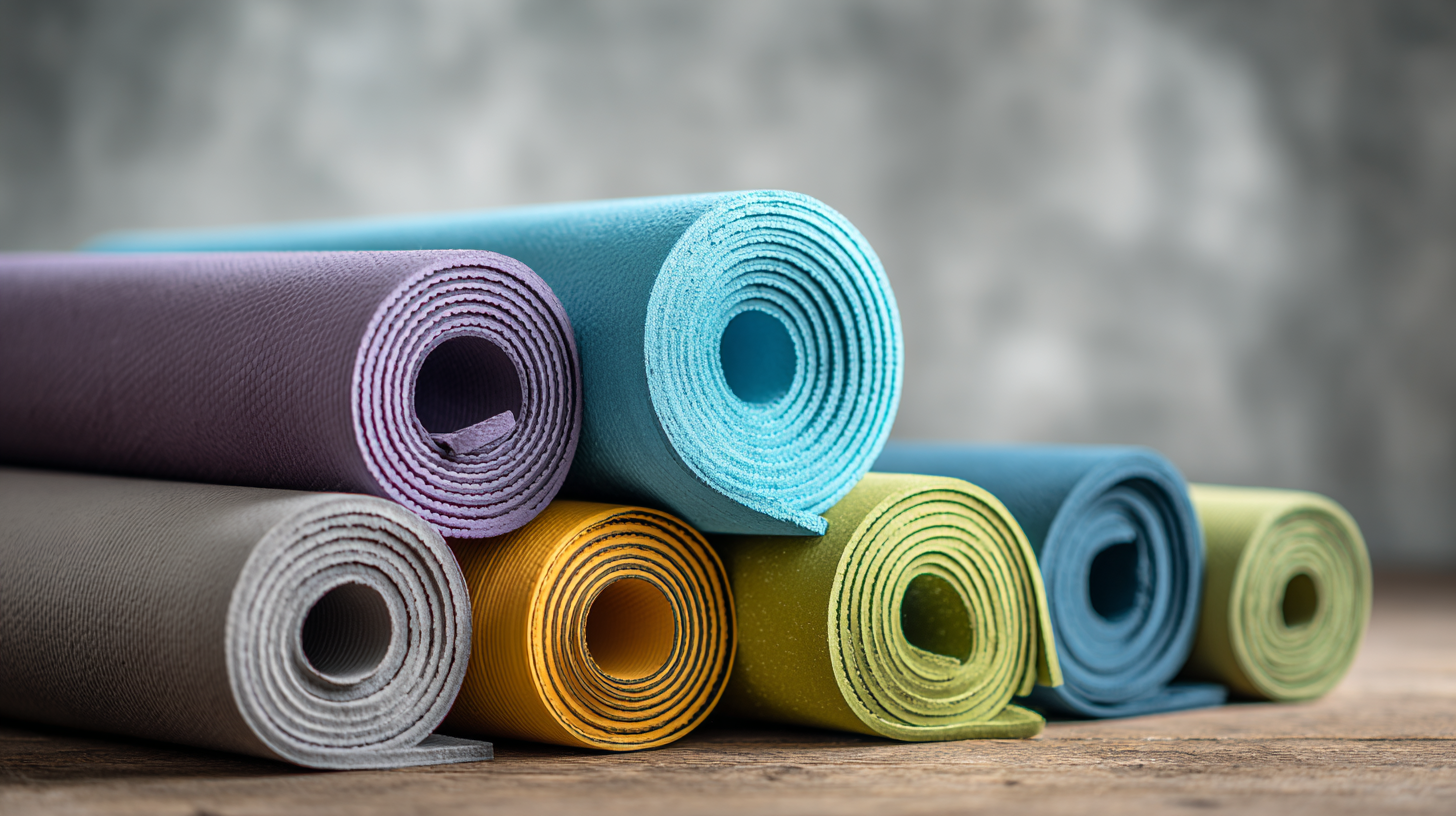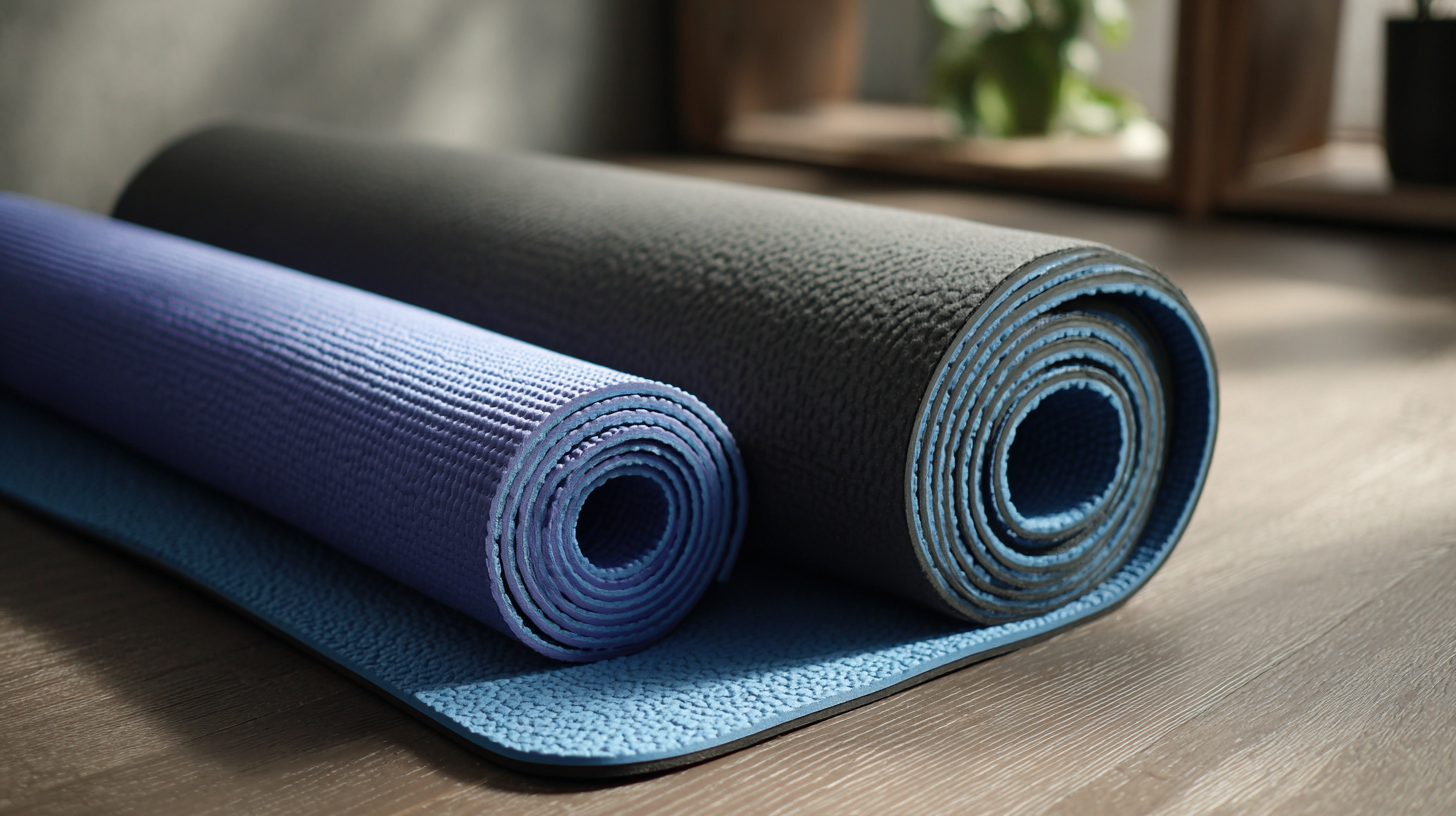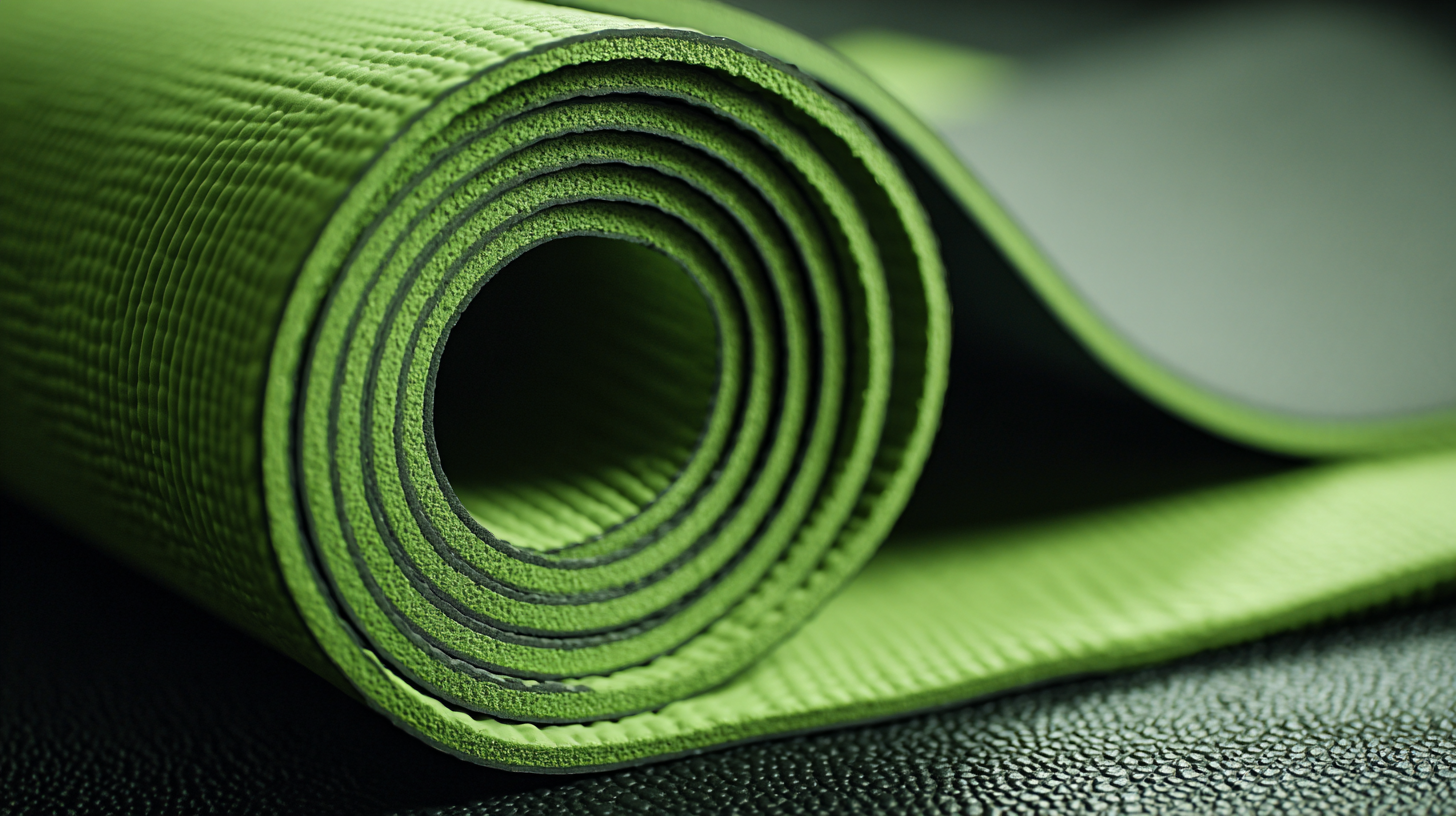As the demand for yoga continues to rise globally, the selection of the best Rubber Yoga Mat has become a significant consideration for both practitioners and retailers. According to the Global Yoga Market report, the yoga industry is expected to reach a market size of $66.2 billion by 2027, highlighting the increasing popularity of yoga and the subsequent demand for quality equipment. Rubber Yoga Mats, known for their durability, eco-friendliness, and superior grip, are becoming a preferred choice among yoga enthusiasts. However, with various options available in the market, consumers often face challenges related to material quality, certifications, and compatibility with different practice styles. Understanding these common issues is essential to make informed purchasing decisions and to ensure a fulfilling yoga experience.

When selecting the best rubber yoga mat for your practice, the advantages of after-sales service play a crucial role in ensuring your satisfaction and long-term use of the product. After purchasing a yoga mat, one may encounter issues such as wear and tear, changes in grip, or even defects that could hinder the practice. Companies that provide robust after-sales support can address these concerns promptly, enhancing the overall ownership experience. Access to customer service representatives who can offer guidance on maintenance or help with product replacements can make a significant difference for avid yoga practitioners.
Moreover, after-sales service often includes warranties or satisfaction guarantees, allowing users to feel secure in their investment. Knowing that you can rely on the manufacturer for assistance, whether it’s through repairs or exchanges, can instill confidence in your purchase. This level of support not only ensures that your yoga mat remains functional and supportive throughout its lifespan but also adds peace of mind, enabling you to focus entirely on your practice, rather than fretting over potential issues with your equipment.
When selecting a rubber yoga mat, it’s essential to consider not only the initial purchase price but also the long-term maintenance expenses. Rubber mats are often touted for their durability and eco-friendliness, but they can incur various costs over time. Factors like cleaning, wear and tear, and eventual replacement must be accounted for when budgeting for your practice.
Cleaning rubber yoga mats typically requires specific care to maintain their integrity. Most practitioners opt for gentle, eco-friendly cleaning solutions to avoid degrading the material. This can lead to regular purchases of specialized cleaners or DIY solutions made from natural ingredients. Additionally, while rubber mats are designed to last, frequent use can lead to signs of wear, such as fading or loss of grip. Depending on the frequency of usage and the intensity of practice, a rubber mat may need to be replaced every 1-3 years, adding to the overall long-term costs associated with your yoga gear. Thus, weighing these maintenance expenses against the initial investment is crucial for making an informed choice in selecting the best rubber yoga mat for your practice.

When selecting a rubber yoga mat, one of the most critical factors to consider is the material quality, which directly influences both durability and the frequency of needed repairs. According to a report from the Yoga Journal, high-quality natural rubber mats can last anywhere from 5 to 10 years with proper care, while lower-quality synthetic options may start degrading after only a few months. This difference in lifespan is largely attributed to the resilience and density of the rubber used, where more durable mats provide better grip and cushioning, reducing wear and tear during practice.
Furthermore, poor quality mats not only wear down faster but also necessitate repairs or replacements more often, contributing to additional costs and inconvenience for yoga practitioners. A study published in the International Journal of Yoga found that mats made from eco-friendly natural rubber had a 30% lower rate of reported wear compared to PVC mats. Investing in a higher-grade rubber mat may lead to better performance during sessions and a lower ecological footprint, as these materials are typically more biodegradable and less harmful to the environment. Selecting a top-notch rubber yoga mat, therefore, is not just about immediate comfort but also about ensuring longevity and sustainability in your practice.
When selecting the best rubber yoga mat, many practitioners often overlook the importance of after-sales support. A high-quality mat is just one aspect of a satisfying yoga experience; customer service plays a crucial role in enhancing that experience. For instance, a brand that offers proactive customer support—complete with responsive communication and easy returns—can ensure users feel confident in their purchase. This peace of mind can transform a simple practice into a deeply engaging experience, as practitioners are less preoccupied with potential issues.
Consider the case of a budding yogi who invests in a premium rubber mat but encounters an unexpected odor upon arrival. A company that provides thorough after-sales support can make all the difference. By promptly addressing the customer’s concerns and offering solutions, such as care instructions or replacement options, the customer feels valued and satisfied. On the other hand, inadequate support may lead to frustration, negating any positive feelings about the mat itself. Ultimately, it’s this blend of quality product and effective support that truly influences customer happiness and loyalty in the competitive yoga market.
| Issue | Impact on Customer Satisfaction | After-Sales Support Example |
|---|---|---|
| Durability Concerns | High - customers expect longevity | Extended warranty and replacement offers |
| Thickness Preference | Medium - affects comfort levels | Guidance on choosing the right thickness based on practice type |
| Surface Grip | High - prevents injuries during practice | Tested grip performance metrics provided |
| Weight and Portability | Medium - affects transport ease | Return policy for unsatisfied customers |
| Material Safety (Toxicity) | High - critical for health-conscious consumers | Certification of materials provided upon request |
When selecting the best rubber yoga mat for your practice, understanding consumer preferences for warranty and repair options is crucial. Recent statistics reveal that a significant number of consumers prioritize durability and long-term investment over price. This shift reflects a broader trend where approximately 70 percent of consumers are willing to choose quality products that promise longevity. As yoga mats can experience wear and tear over time, considering warranty options can provide peace of mind and reflect the manufacturer’s commitment to quality.

To navigate your selection process, here are some helpful tips. First, look for mats that offer an extended warranty period. A warranty can indicate that the brand stands behind its product and values customer satisfaction. Second, consider a mat that not only provides durability but also features easy repair options. If your mat can be mended or resurfaced rather than replaced, it encourages sustainable practices and can save you money in the long run. Lastly, read consumer reviews focused on longevity and performance to gather insights from fellow practitioners about their experiences with different brands.
